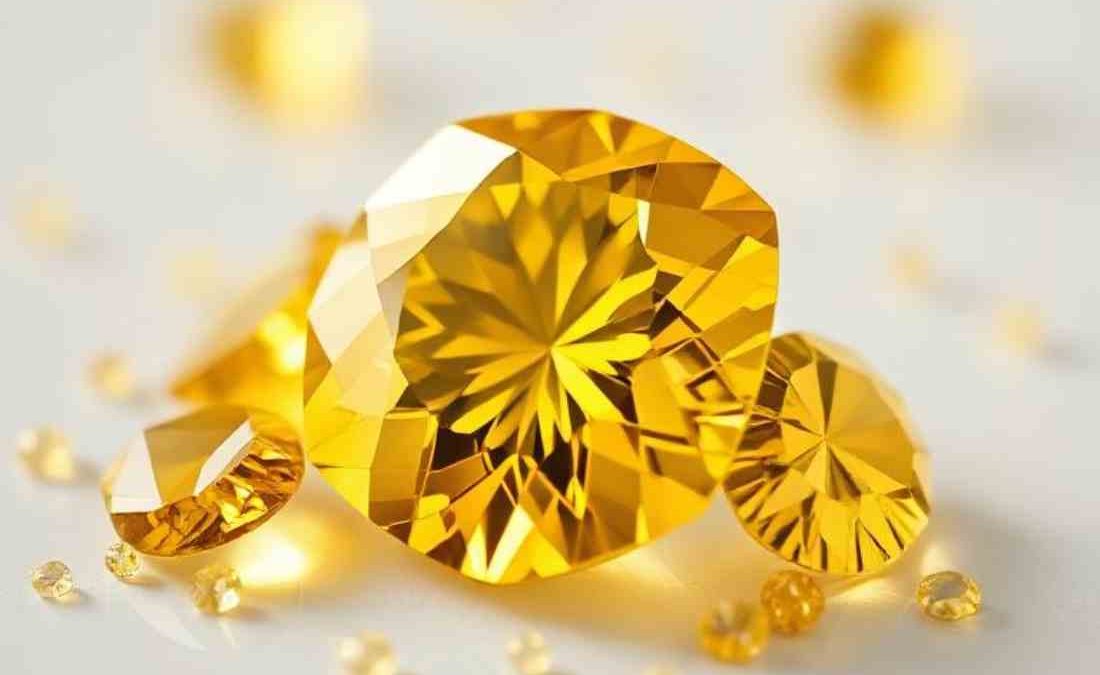Yellow gemstones are among the most vibrant and captivating stones in jewelry. Their sunny hues evoke warmth, joy, and positivity, making them a popular choice for rings, necklaces, and earrings. From the golden sparkle of citrine to the deep richness of yellow sapphire, these gems come in various shades and properties. Below, we explore their origins, how they work in jewelry, where they are found, and their design applications.
Table of Contents
Where Does It Come From?
Yellow gemstones form under different geological conditions, depending on their type. Some of the most well-known yellow gems include:
- Citrine – A variety of quartz, citrine gets its yellow color from traces of iron. Natural citrine is rare, and many stones on the market are heat-treated amethyst.
- Yellow Sapphire – A precious gemstone, yellow sapphire belongs to the corundum family and gets its color from iron impurities.
- Yellow Diamond – One of the rarest colored diamonds, its hue comes from nitrogen atoms within the crystal structure.
- Topaz – Imperial and yellow topaz are prized for their golden tones, often enhanced through heat treatment.
- Amber – Unlike other gemstones, amber is fossilized tree resin with golden-yellow hues that have been cherished for centuries.
These gemstones are mined from different parts of the world, each with unique geological conditions influencing their color and quality.
How It Works in Jewelry
Yellow gemstones are versatile and can be cut into various shapes to enhance their brilliance. Their hardness (measured on the Mohs scale) determines their durability:
- Durability – Sapphires and diamonds rank high (9-10), making them ideal for daily wear, while softer stones like amber require more care.
- Enhancements – Many yellow gemstones undergo treatments like heat or irradiation to intensify their color. Buyers should always check for treated vs. natural stones.
- Metals & Settings – Yellow gold complements these gems beautifully, but white gold and platinum create striking contrasts. Popular settings include solitaire, halo, and vintage designs.
Where It Is Found
Yellow gemstones are sourced from various regions worldwide:
- Citrine – Brazil is the largest producer, with other deposits in Madagascar, Spain, and the U.S.
- Yellow Sapphire – Sri Lanka, Madagascar, and Thailand are key sources.
- Yellow Diamond – The most famous deposits are in South Africa, Australia, and the Argyle mine (now closed) in Western Australia.
- Topaz – Brazil, Nigeria, and Russia produce high-quality yellow topaz.
- Amber – The Baltic region (Poland, Lithuania) and the Dominican Republic are major suppliers.
Mining methods vary from large-scale operations to artisanal digging, with ethical sourcing becoming increasingly important in the gem trade.
Design Applications
Yellow gemstones add a bold pop of color to jewelry designs. Some popular styles include:
- Statement Rings – Yellow sapphires or citrines set in intricate designs make eye-catching centerpieces.
- Elegant Necklaces – A yellow diamond pendant or amber beads bring warmth to any outfit.
- Vintage-Inspired Pieces – Art Deco and Victorian styles often feature yellow gemstones surrounded by diamonds or filigree work.
- Modern Minimalism – A sleek yellow topaz in a bezel setting offers a contemporary look.
Designers also experiment with mixed metals and contrasting gemstones (like blue sapphires or emeralds) to create unique, vibrant combinations.
Conclusion
With their radiant hues and diverse properties, yellow gemstones continue to captivate jewelry lovers. Whether set in a classic solitaire ring or a bohemian amber necklace, they bring a touch of sunshine to any collection. Their geological origins, durability, and design versatility make them a timeless choice for equally everyday wear and special occasions.


